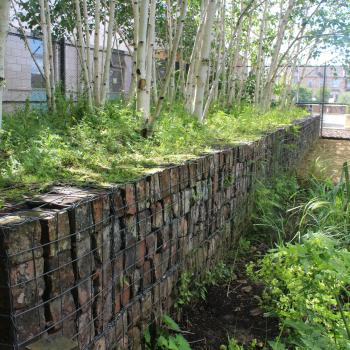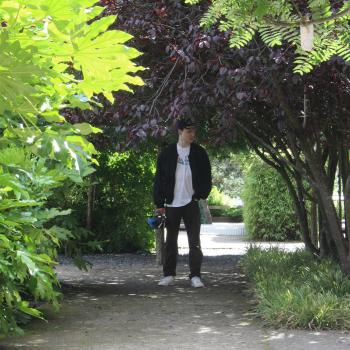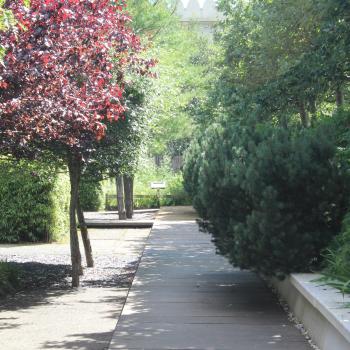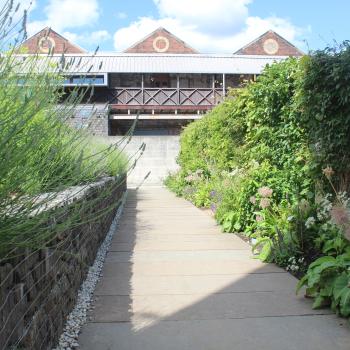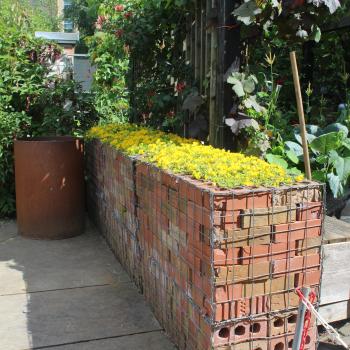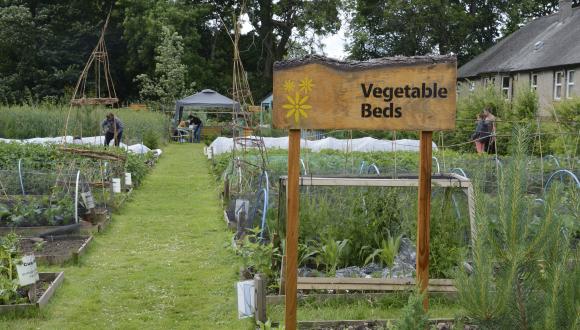The Hidden Gardens
Encouraging greater use of a public greenspace located between communities of disadvantage and cultural diversity in Glasgow’s Southside
The Hidden Gardens
Grantee: The Hidden Gardens
What the project set out to achieve
The Hidden Gardens is a well-established, welcoming, safe, and free to enter public greenspace located between communities of disadvantage and cultural diversity in Glasgow’s Southside. The project aimed to bring together people of all backgrounds, ages and abilities from the very diverse (both economically and culturally) communities of Pollokshields and Govanhill, engaging and inspiring larger numbers of local people to use this space on a regular basis by taking part in a wide ranging programme of activities that included understanding nature and environment, improving health and well-being and encouraging an interest in art and creativity.
Where did the idea for the project come from?
The idea for the project evolved from analysis of The Hidden Gardens' Independent Impact Evaluation (2015) and from general enquiries to The Hidden Gardens - there was still a lack of awareness of their existence for large numbers of local people, but usage would increase if help was offered to help with engaging with the space. 91% of respondents in the Impact Evaluation considered improving their understanding of how to relate to and discover nature as being an important benefit in encouraging use of The Hidden Gardens.
How the community helped develop the project
Through engagement with various groups - including their gardening volunteers, Men’s Group, participants from their pilot project ‘Our Hidden Gardens’ - it was found that many people would like increased opportunities to discover and learn more about the wildlife in the gardens e.g. bird song, bees, moths; they want to learn new skills by taking part in activities such as wildlife surveying, gardening volunteering, understanding what plants to use to attract wildlife and improve health; to improve their health and well-being e.g. they would like to take part in mindfulness sessions and have the chance to meet others from all backgrounds, cultures and abilities who they might not usually come into contact with providing opportunities to make friends and learn more about each other. For the majority of people in the local area cost is always a barrier that prevents involvement in activities – whether a learning opportunity, eating healthily or attending an exercise class but the gardens always provides a neutral space which provides equality of opportunity to all – a level playing field where cost is not a barrier to learning and participation.
How the project fits into the bigger picture
The Hidden Gardens has an excellent track record in local community engagement hosting many small and larger events each year and providing a variety of training and learning opportunities from hands on, practical gardening skills training (volunteering), Help yourself Grow (a partnership project with Fairdeal which provides a training in gardening skills and personal development for those with learning disabilities), schools workshops, accredited training, biodiversity and environmental workshops which ties in with the education and learning strand of our work. THG increased their engagement with the local community ensuring that everyone, whether recently settled in the area or a long-time resident who has never discovered the space, has the opportunity to engage with THG, creating a lasting legacy for local people where everyone will have the chance to discover more about nature and improve their health in a beautiful, safe, inclusive greenspace regardless of income and despite living in a densely populated urban environment.
What the project contributed
THG delivered vibrant programme of newly-developed interpretation, events and activities linked by a common theme - wildlife, horticulture and the arts - to provide people locally and city-wide with a range of new access routes to understanding and engaging with the Gardens as a green space, incluidng:
- 10 events offering 50 activities that engaged with new audiences and repeat visitors, providing 1983 people with the opportunity to engage with the space in different ways
- Sense of arrival improvements (online and physical): new website; new signage; new plants; improved interpretation; renewed visual cues on ground at both entrances; new garden lighting installed to improve visitor experience at night-time events/ activities
- A greater range of accessible information: new sensory tours for people with sensory impairments; new discovery guide + map (online and printed) both available in large print format; new audio guides in Urdu & English; 3 new self-led pocket guides (birds, invertebrates & insects); temporary signage - useful plants and natural dyes
- 150 unpaid volunteer opportunities filled (15%> BME volunteers): garden maintenance; delivering and preparing event activities; skills workshops (Mobile Journalism, macramé); new Sensory Tours; Audio Guide creation and delivery; helping out with other local green space events (Pollokshields ‘Ready Steady Grow’ and ‘Pollokshields Street Party’)
The project made a contribution towards a culture shift in people’s perceptions of the value of green space as an integral component of healthy community life. It increased the interaction of local families, and a wider city audience, with the Gardens, inspiring local communities to view nature and their environment in new and more sustainable ways: 52% of people who attended events were children and young people and 50% living locally (G41/42 postcodes: most deprived 10% - SIMD).
People reported:
- better understanding of the Gardens benefits to them and to nature as a green space
- increased ability to access, understand and learn about wildlife, biodiversity and the environment at the Gardens
- how engaging with the Gardens benefited their health & wellbeing
- greater sense of ownership and influence over development of the Gardens – new Advisory Group established including local BAME residents/ volunteers
- that they want to share their positive experiences of the Gardens with others
- that they want to make more use of the Gardens - discover wildlife & meet people
- learning new skills and gaining confidence (especially volunteers).
The Gardens:
- increased engagement from local people especially BAME communities and 'new Scots' - 25% people from BAME communities and 15 people with sensory impairments (deaf, blind, living with sight/ hearing loss) attend events
- multiple new partnerships with local agencies, in particular RNIB Scotland & Scottish Ethnic Minorities Deaf Club to develop new sensory tours
- documented engagement techniques to share as case studies of good practice - creation of media by volunteer social media team (Mobile Journalism workshops) and volunteer blogs
- contributed towards the improvement plans for Pollokshields and Govanhill Development
- empowered people to enjoy the outdoors/ influence/ own its development/ using a variety of approaches to engage including art, science, participation, volunteering & nature.
The story of The Hidden Gardens GICEF project






